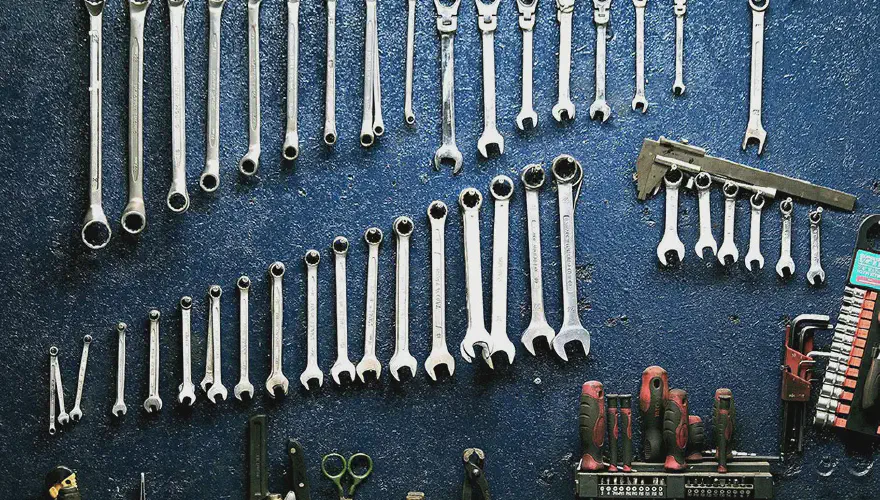From Rust to Ride - 5 Motorcycle Restoration Hacks I Learned from My Puch 125 SR
For as long as I can remember, one particular motorcycle held a special place in my mind: my grandfather’s Puch 125 SR from 1972. He passed away when I was very young, but the bike remained in my grandparents’ garage, covered in dust but full of stories. My grandmother considered it almost sacred, so nobody dared to touch it for decades.
Only after she passed away did my father finally let me roll the Puch out of the garage — after nearly 25 years of standing still. To my surprise, a bit of fresh gas and a few purposeful kicks on the starter brought the engine back to life. Hearing it cough, sputter, and finally roar felt like waking up a sleeping time capsule. That single moment lit a fire in me: I knew I had to restore this machine and bring it back to the road.
The truth is, I didn’t really know what I was getting myself into. I had no proper tools, only borrowed some from my father, and a lot of enthusiasm. But along the way, I picked up a handful of hacks that made the difference between giving up in frustration and actually making progress. Whether you’re restoring a motorcycle, a car, or even just fixing up an old mechanical tool, I think these lessons will resonate with any maker.
Hack 1: A Repair Manual and Spare Parts List Are Essential

The first thing I bought wasn’t a fancy tool — it was a repair manual. Having the official instructions for basic maintenance and disassembly tasks gave me a foundation to start with. The manuals aren’t perfect (black-and-white photocopies with grainy images often require a bit of imagination), but when you’re taking apart complex assemblies like the front fork, knowing the correct sequence is invaluable.
The second indispensable resource was a spare parts list. This small book isn’t just a catalog of part numbers — it includes detailed exploded-view diagrams. These drawings were lifesavers. For example, when I had to disassemble the rear axle shaft, the diagrams showed exactly which washers, rings, and spacers belonged where. Without that reference, I would have been lost.
If you ever plan to restore an old machine, don’t start without these two companions: a repair manual and a parts catalog. They are your roadmap through unfamiliar territory.
Hack 2: Rust removal with citric acid and Coca Cola
Old motorcycles are a collection of worn metal, oily residues, and plenty of rust. Not having access to a sandblasting setup, I had to improvise ways to clean and restore parts.
One method I discovered is citric acid. Mixed with water into the right ratio, it becomes a powerful but gentle rust remover. I let rusty bolts and brackets soak overnight, and in the morning, much of the crust was gone. The best part? Citric acid powder is cheap, safe to use, and easy to find.

For chrome parts, there’s a surprisingly effective trick: Coca-Cola and aluminum foil. Crumple the foil into a ball, dip it into Coke, and gently rub the chrome surface. The combination of mild acidity and abrasion works wonders, lifting rust spots and restoring a shine that seemed lost forever.
These DIY methods may not be as fast as professional sandblasting or polishing, but they’re accessible and incredibly satisfying when you see the transformation.
Hack 3: Brute Force Isn’t Always the Answer
When you’re taking apart a machine that hasn’t been touched in decades, you will encounter bolts that refuse to budge. Early on, I thought force was the answer. Hammer harder, pull stronger. I quickly learned that this often causes more damage than progress.
Instead, patience and the right techniques win the day. WD-40, brake cleaner, and penetrating oils became my best friends. Letting a stubborn part soak overnight was often the difference between success and a stripped screw head.

Image by By Hooperbloob at English Wikipedia from Wikipedia
Speaking of screws: many old motorcycles use slotted screws, which are notorious for wearing out. A hand impact screwdriver was a game-changer here. It transfers a sharp rotational shock directly into the screw, breaking it free without destroying the slot. Without it, I would have spent hours drilling out broken screws and re-tapping threads.
For parts that seemed fused together by decades of grime and oil, heat was the answer. A simple gas burner applied just enough expansion to free up seized components. The lesson here? Use finesse before force — it saves time, parts, and sanity.
Hack 4: Organizing and Documenting Like a Pro
I underestimated this one badly. At first, I thought I could rely on memory and a few boxes to keep track of parts. But as the project stretched over weeks and months, and as parts moved between different workshops and storage containers, chaos crept in.
My rescue came in the form of plastic bags and a marker. Every small assembly got its own labeled bag. That way, I didn’t just have a pile of random screws — I had “rear brake linkage bolts” or “fork spacers” neatly contained.
Equally important: take photos. Lots of them. You may think you’ll remember how a cable routes through the frame or which side a washer goes on, but I promise you won’t. Sometimes, weeks or even months pass before you return to that exact part. A quick photo can save hours of head-scratching later.

Videos would be even better, but I often had greasy hands and didn’t want to mess with cameras. Still, I recommend documenting in whatever way works best for you. Your future self will thank you.
Hack 5: Remove Paint Gently to Save the Build
Restoration isn’t just about mechanics — it’s also about appearance. Many of my Puch’s parts had lost their paint entirely, while others had layers flaking off. To repaint, I had to remove what was left.
I quickly discovered that aggressive grinding can ruin a part. An angle grinder makes quick work of paint, but it also eats into the underlying metal, leaving uneven surfaces. Instead, I learned to take it slow: using a drill with a wire brush attachment, sanding by hand, or carefully working with finer tools.
It’s tedious, but patience pays off. Preserving the original lines and shapes of a part is worth far more than saving a few minutes with a heavy hand.
Conclusion: A Project Still in Progress
I wish I could say this story ends with me riding the fully restored Puch down an open road — but the truth is, life got in the way. For the past year and a half, most of my free time went into renovating our house. The motorcycle project had to be pushed into a corner and put on hold.
But here’s the exciting part: with the house finished, I finally have a newly renovated garage — a proper workshop space where the Puch now stands, waiting for me. This winter, I plan to pick up the project again, using the lessons I’ve learned to finally bring it back to life.

And in many ways, that’s the real story here. Restoration, like any maker project, isn’t a straight line. It’s a journey full of false starts, pauses, and unexpected detours. But every step teaches you something new — not just about machines, but about patience, persistence, and creativity.
My Puch may not be finished yet, but it already gave me more than I expected: skills I use in other projects, confidence to tackle the unknown, and a deeper appreciation for the maker’s mindset. Whether you’re debugging code, 3D printing parts, or coaxing an old motorcycle back to life, the principles are the same. Start curious, stay patient, and enjoy the ride.

